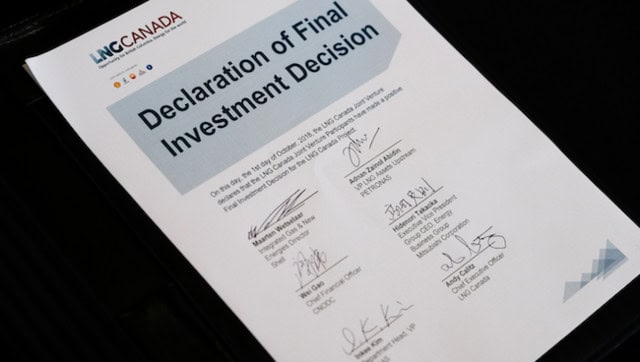
The National Energy Board is scheduling hearings over the next three months to consider a jurisdictional challenge of the approval of a pipeline needed to supply natural gas to the recently sanctioned $40-billion LNG Canada project.
But planning for construction to begin early next year will continue based on the $6.2-billion Coastal GasLink Pipeline’s provincial approvals and permits, said a spokeswoman for the project.
The NEB hearings will consider only the question of whether the British Columbia Oil and Gas Commission had jurisdiction to issue approvals for the project, the NEB says.
If it decides the project should be under federal jurisdiction, the regulator says the proponent will have to make a formal NEB application and undergo a separate process to win federal approval.
“If the NEB decides Coastal GasLink is to be federally regulated, then the project believes the NEB will need to address transition from provincial to federal jurisdiction,” pipeline spokeswoman Jacquelynn Benson said in an email on Wednesday.
“If that situation occurs, Coastal GasLink will review that decision to determine its path forward.”
The NEB actions are in response to a challenge by B.C. resident Mike Sawyer who argues that because TransCanada Corp. will own and operate the proposed pipeline and its connected Nova Gas Transmission Ltd. system together, they form a single system that crosses the Alberta-B.C. boundary and therefore must be regulated by the federal government.
The NEB says on its website it will accept additional written evidence from the builder late this month, take written evidence from interveners in January and gather information requests and responses from parties in January and February before holding final oral arguments in March.
LNG Canada announced in October its partners — Royal Dutch Shell, Mitsubishi Corp., Petronas, PetroChina Co. and Korean Gas Corp. — had made a final investment decision to proceed with the project after delaying it in 2016 due to poor global prices for LNG.
The 670-kilometre pipeline would have an initial capacity to bring up to 2.1 billion cubic feet per day of natural gas from wells in northeastern B.C. to the proposed liquefied natural gas export facility near Kitimat.


